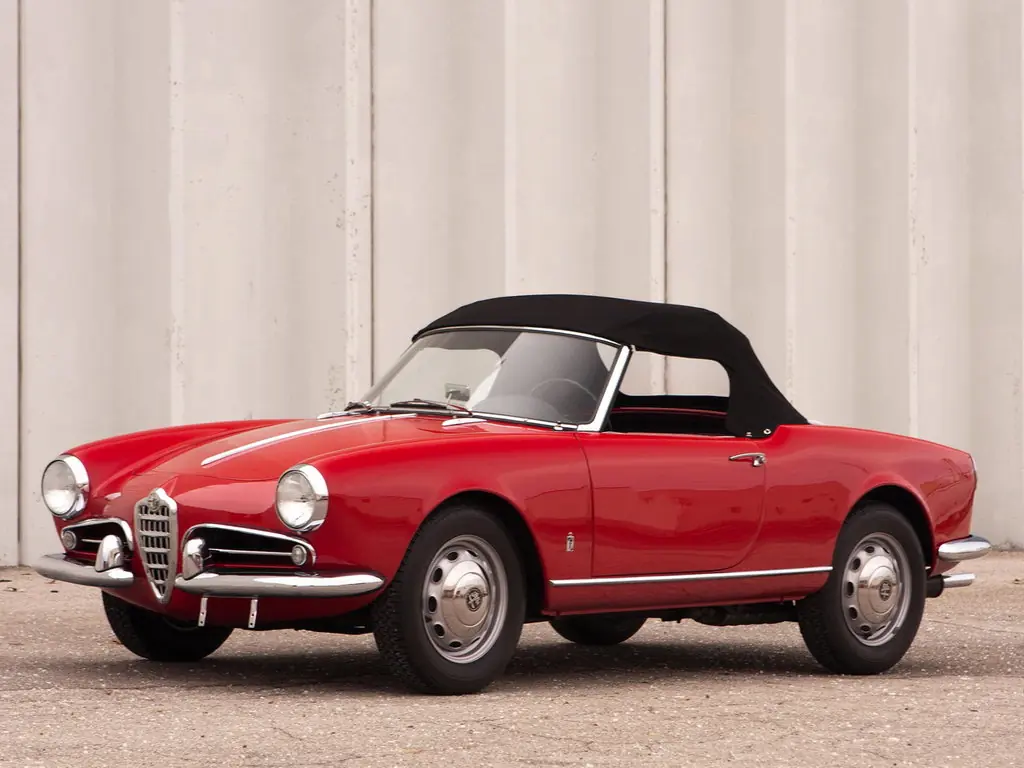The Alfa Romeo Giulietta sparked a revolution in post-war European motoring. This compact Italian masterpiece redefined the sports car segment by proving that performance and practicality could coexist in perfect harmony. Breaking away from the era’s luxury car conventions, the Giulietta brought Alfa Romeo’s racing pedigree to a broader audience.
From its launch in 1954, the Giulietta captured imaginations with its distinct personality. While other manufacturers focused on either utility or performance, Alfa Romeo dared to blend both. The result was a car that could tackle daily commutes and weekend races with equal aplomb.
The Birth of an Icon
The story of the Giulietta began in the challenging post-war period when Alfa Romeo needed to transition from exclusive luxury cars to more accessible models. The company’s engineers faced a formidable challenge: create a car that maintained Alfa’s prestigious reputation while appealing to a new generation of drivers. Their solution would influence automotive design for decades to come.
The development team focused on creating a lightweight, agile platform that could accommodate various body styles. This versatility proved crucial, allowing Alfa Romeo to target different market segments with sedan, coupe, and spider variants while maintaining the core driving dynamics that defined the brand.
“My father’s 1956 Giulietta Spider still brings tears to my eyes. The sound of that engine, the way it handles – it’s not just a car, it’s a time machine to a golden age of motoring.” – James Richardson, Classic Car Collector
The Giulietta’s success stemmed from its ability to deliver an authentic sports car experience without the usual compromises. Its compact dimensions and refined mechanics made it equally at home on narrow city streets and winding country roads.
Engineering Excellence
Under the hood, the Giulietta housed a remarkable 1.3-liter twin-cam engine. This powerplant exemplified Italian engineering prowess, delivering performance that belied its modest displacement. The key technical innovations that set it apart include:
- twin-overhead camshaft design that maximized breathing efficiency;
- aluminum alloy construction reducing overall weight;
- hemispherical combustion chambers optimizing fuel mixture;
- robust bottom end capable of sustained high-rpm operation;
- advanced valve timing providing excellent torque spread.
The engine’s capabilities transformed the Giulietta into a genuine performer, capable of reaching 134 km/h – impressive figures for a 1.3-liter car of the 1950s. Fuel consumption remained reasonable at 8 liters per 100 kilometers, making it practical for daily use.
Design and Versatility
The Giulietta’s design brilliantly balanced form and function. Its compact proportions masked clever packaging that provided comfortable accommodation for four adults. The transition from the 750 to 101 series in 1959 brought subtle but significant improvements, including revised front-end styling and an updated interior.
Interior ergonomics reflected careful consideration of driver needs. The large speedometer and tachometer provided clear information, while the wood-rimmed steering wheel and well-placed controls created an engaging driving environment.
“The Spider version particularly showcases Bertone’s genius. Every angle reveals new details, making it one of the most beautiful cars ever designed.” – Michael Thompson, Automotive Historian
The Giulietta range offered remarkable versatility. From the practical sedan to the glamorous Spider, each variant maintained the model’s core values while serving different purposes. The updates introduced with the 101 series further refined the package without compromising its essential character.
Racing Heritage
The Giulietta’s competition success cemented its reputation as a genuine sports car. Its achievements on race tracks across Europe proved that Alfa Romeo’s engineering philosophy could deliver results where it mattered most.
Notable racing achievements include:
- multiple class victories in the Mille Miglia;
- successful campaigns in European touring car championships;
- numerous hill climb records across Europe;
- dominant performances in club racing events.
These competition successes influenced the development of road cars, leading to continual improvements in performance and handling. The racing program also helped establish a devoted following among enthusiasts who appreciated the car’s sporting credentials.
A Legacy That Endures
The Giulietta transcended its role as merely another post-war automobile. It represented a pivotal moment in automotive history when sports cars became accessible to enthusiasts who previously could only dream of owning such a vehicle.
Today, the Giulietta’s influence continues to resonate through automotive design and engineering. Its combination of performance, practicality, and style remains a blueprint for modern sports cars.
| Pros | Cons |
|---|---|
| Revolutionary twin-cam engine design with exceptional performance | Limited parts availability in modern times |
| Elegant styling that has aged gracefully | Rust-prone body panels require careful maintenance |
| Excellent handling and driving dynamics | Relatively modest straight-line performance by modern standards |
| Strong racing pedigree and competition history | Complex mechanical components need specialist knowledge |
| Growing investment potential as a collector’s car | Higher maintenance costs compared to contemporary classics |
| Practical enough for regular use | Original spare parts becoming increasingly scarce |
| Strong enthusiast community support | Restoration costs can be significant |
The Alfa Romeo Giulietta (750/101) stands as a testament to the golden age of Italian automotive design and engineering. Its enduring appeal lies not just in its beautiful lines or sporting capabilities, but in its role as a pioneer that helped democratize the sports car segment.

